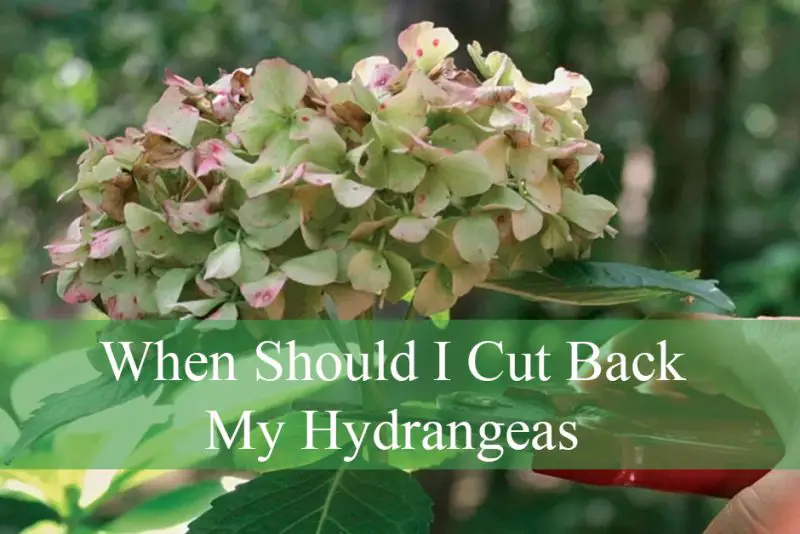Hydrangeas are among the most beloved flowering shrubs in gardens around the world. Their large, colorful blooms and lush foliage bring dramatic beauty to landscapes. However, the secret to getting the best blooms lies not only in watering and feeding but also in knowing exactly when and how to prune them. One wrong cut at the wrong time can mean no flowers the following year. That’s why the question “When should I cut back my hydrangeas for best blooms?” is crucial for every gardener to understand.
Hydrangea pruning can feel intimidating because different types have different requirements. Some bloom on old wood, while others bloom on new growth. If you prune at the wrong moment, you risk cutting off the very stems that would produce flowers. To achieve full, healthy, and vibrant blooms year after year, understanding the growth habit of your hydrangea variety and choosing the correct pruning window is essential.
In this guide, we’ll explore everything you need to know about pruning hydrangeas. From understanding the difference between new and old wood, identifying your plant type, to practical techniques and seasonal timing, we’ll give you a comprehensive look at the best practices to maximize blooms and maintain a healthy plant.
Understanding How Hydrangeas Grow

To properly prune a hydrangea, you first need to understand how it grows and produces flowers. Hydrangeas fall into two main categories: those that bloom on old wood and those that bloom on new wood. Old wood refers to stems that grew the previous year, while new wood grows during the current season.
Hydrangeas that bloom on old wood already have their flower buds set by late summer or early fall of the previous year. If you cut them back too late in fall or too early in spring, you’ll remove those buds and lose the following season’s flowers. In contrast, hydrangeas that bloom on new wood develop buds in spring and bloom later in summer, so they can be pruned in late winter or early spring without sacrificing blooms.
Knowing whether your hydrangea blooms on old or new wood is the most important factor in determining the right time to cut it back. Once you understand this, everything else falls into place.
Identifying Your Hydrangea Type
There are several common types of hydrangeas grown in home gardens, and each has its own pruning needs. The most popular include Bigleaf hydrangeas, Panicle hydrangeas, Smooth hydrangeas, Oakleaf hydrangeas, and Mountain hydrangeas.
Bigleaf hydrangeas (Hydrangea macrophylla) are known for their mophead or lacecap flowers and typically bloom on old wood. These are very common in coastal and temperate areas. Panicle hydrangeas (Hydrangea paniculata), on the other hand, bloom on new wood and are more tolerant of sun and pruning. Smooth hydrangeas (Hydrangea arborescens), like the well-known ‘Annabelle’ variety, also bloom on new wood and respond well to late-winter pruning.
Oakleaf hydrangeas (Hydrangea quercifolia) offer unique foliage and bloom on old wood. Mountain hydrangeas (Hydrangea serrata) are closely related to Bigleaf types and also typically bloom on old wood. Knowing which variety you have is crucial to avoid accidentally pruning off future flowers.
If you’re unsure which type is in your garden, consider observing when your plant sets buds and blooms. If buds appear in spring and flowers come later in summer, it’s likely a new-wood bloomer. If you see buds forming in late summer or fall and they remain dormant through winter, then it’s probably an old-wood bloomer.
The Best Time to Cut Back Hydrangeas That Bloom on Old Wood
If your hydrangeas bloom on old wood, timing is everything. These plants set their flower buds during the summer for the following year. Therefore, the ideal time to prune them is immediately after they finish blooming, typically in mid to late summer.
This timing allows you to shape the plant and remove spent blooms without removing the buds for the next season. Waiting too long into fall or pruning in early spring can damage or remove those delicate flower buds entirely. For this reason, avoid pruning old-wood bloomers in late fall or winter.
You may also want to deadhead old blooms during the flowering season to keep the plant looking neat, but this should be done carefully without cutting too far down the stem. If major shaping or rejuvenation is needed, it’s best to spread it out over a few seasons to avoid shocking the plant or reducing flowering.
The Ideal Season to Prune Hydrangeas That Bloom on New Wood
Hydrangeas that flower on new wood are much more forgiving when it comes to pruning. Since they develop buds on the current season’s growth, you can prune them back in late winter or early spring without affecting the flowering potential.
In colder climates, it’s often best to wait until the danger of frost has passed. Pruning too early while winter still lingers can expose new cuts to freezing temperatures, which may damage emerging shoots. As soon as spring begins to arrive, you can begin cutting back stems to encourage vigorous growth and more prolific blooming.
These hydrangeas can often handle harder pruning, especially varieties like ‘Annabelle’ that tend to become floppy if not cut back regularly. Removing older, woody stems encourages stronger, thicker shoots and bigger blooms later in summer. While you can technically prune these types in the fall, waiting until spring provides better frost protection and allows you to remove any winter-damaged stems more effectively.
What Happens If You Prune at the Wrong Time?
Pruning at the wrong time can have noticeable consequences for your hydrangeas. The most common result is a total lack of flowers during the next blooming season. This is especially true for hydrangeas that bloom on old wood. Removing flower buds that were set the previous year means the plant has nothing left to bloom with.
In addition to lost flowers, pruning at the wrong time can also weaken the plant. For instance, cutting during active growth can stress the hydrangea and reduce its overall vigor. Similarly, pruning in fall can lead to new growth that is vulnerable to frost damage, which might not survive the winter.
Some gardeners mistakenly think their hydrangea isn’t blooming due to poor soil or lack of sunlight, when in fact, improper pruning is the true culprit. Once you understand the cycle of your plant’s growth, it becomes much easier to time your cuts properly and avoid setbacks.
How Pruning Affects Bloom Quality and Plant Health
Pruning isn’t just about shaping or size control—it directly impacts bloom quality and overall plant health. When done correctly, pruning encourages fresh, vigorous growth, improves air circulation, and prevents disease. Well-pruned hydrangeas tend to produce larger, more vibrant blooms and maintain a balanced structure.
For hydrangeas that bloom on new wood, pruning helps stimulate more stems, which leads to an abundance of flowers. For those blooming on old wood, selective thinning can still enhance light penetration and airflow, reducing the risk of mold or mildew.
Neglecting to prune altogether can lead to overgrown shrubs with reduced flowering. Blooms may become smaller, fewer, or only appear at the outer edges of the plant. Regular pruning helps maintain both the aesthetic appeal and long-term vitality of your hydrangeas.
Techniques for Cutting Back Hydrangeas Safely
Proper pruning technique plays a big role in achieving success. Always start with clean, sharp pruning shears to ensure smooth cuts and minimize the risk of disease. Avoid tearing or crushing stems, which can leave plants vulnerable to infection.
When cutting back stems, make your cuts just above a healthy bud or node. This encourages new growth from that point. Avoid leaving long stubs behind, as they can decay and attract pests. If you’re removing dead wood, cut it back to the base or to the nearest healthy branch.
For large, mature plants, you can also consider rejuvenation pruning, which involves removing up to a third of the oldest stems at the base. This helps open up the plant and promotes younger, more productive shoots in the future.
Take your time, observe the plant structure, and never rush through the process. A mindful approach leads to more satisfying results.
Hydrangeas in Different Climates: Timing Adjustments
Your local climate can influence the best time to prune. In warmer regions where frost is rare, gardeners may have more flexibility with late-winter or early-spring pruning. However, in colder areas, pruning should be delayed until all danger of frost has passed to protect new shoots from damage.
In coastal regions or zones with long growing seasons, some hydrangeas may continue blooming into late summer or fall. In this case, be careful not to prune too late, as buds for the next year may already be forming.
Paying attention to your hardiness zone and regional weather patterns helps you fine-tune your pruning schedule for optimal results. Gardeners in USDA Zones 3 through 5 should take extra care with timing to avoid frost damage, while those in Zones 7 through 10 may enjoy more leeway.
Encouraging More Blooms After Pruning
Once you’ve pruned your hydrangeas at the correct time, you can further encourage blooming through good cultural practices. Ensure your hydrangeas are planted in well-draining soil enriched with organic matter. Regular watering during dry spells and a balanced fertilizer application in spring can provide the nutrients needed for strong flowering.
Mulching around the base helps retain moisture and suppress weeds without crowding the stems. Avoid over-fertilizing with high-nitrogen products, as this promotes leafy growth at the expense of blooms. Pruning combined with proper care sets the stage for abundant flowers season after season.
You may also want to protect developing buds on old-wood varieties during sudden spring cold snaps with a breathable fabric covering. This prevents bud damage and helps ensure flowering later in the season.
FAQs About Cutting Back Hydrangeas
When should I cut back my hydrangeas in the spring?
You should only cut back hydrangeas in spring if they bloom on new wood. Late winter to early spring is ideal before new growth appears. Avoid pruning old-wood bloomers at this time.
Is it OK to cut back hydrangeas in the fall?
Cutting back hydrangeas in the fall is generally not recommended, especially for varieties that bloom on old wood. Fall pruning risks removing next year’s flower buds or triggering late-season growth that won’t survive frost.
Can I cut my hydrangeas all the way back?
Some hydrangeas, like smooth or panicle types, can be cut back significantly each year. However, old-wood bloomers should only be lightly pruned after flowering. Always identify your type before heavy pruning.
What happens if I don’t prune my hydrangeas?
Unpruned hydrangeas may become overgrown and produce fewer blooms over time. While some types can thrive with minimal pruning, regular maintenance improves health, appearance, and flowering potential.
Conclusion: Timing Is Key to Stunning Hydrangea Blooms
Knowing when to cut back your hydrangeas is the key to enjoying their full blooming potential. Whether your plant blooms on old wood or new wood makes all the difference in the timing and approach. For old-wood varieties, prune immediately after flowering in summer. For new-wood varieties, prune in late winter or early spring before new growth begins.
By identifying your hydrangea type, understanding its bloom cycle, and applying the right pruning techniques, you can transform your garden into a vibrant display of color and texture. Pruning doesn’t have to be intimidating—with the right knowledge, it becomes one of the most rewarding parts of hydrangea care.






